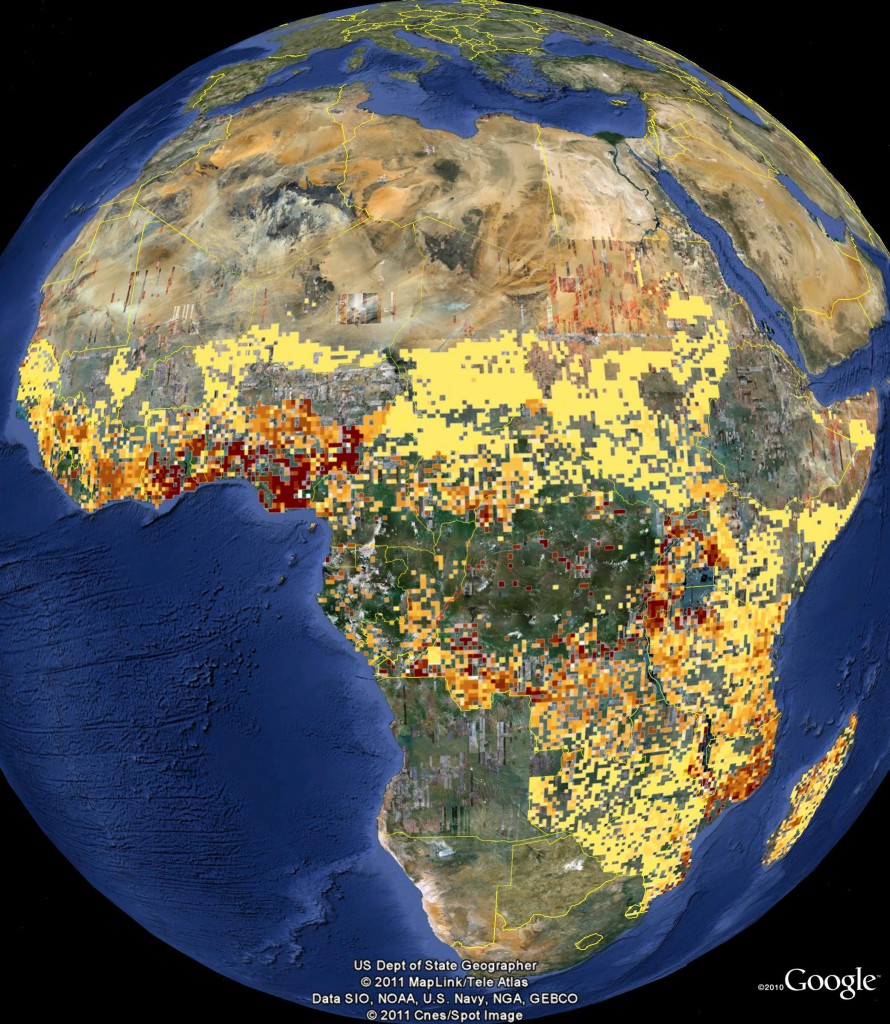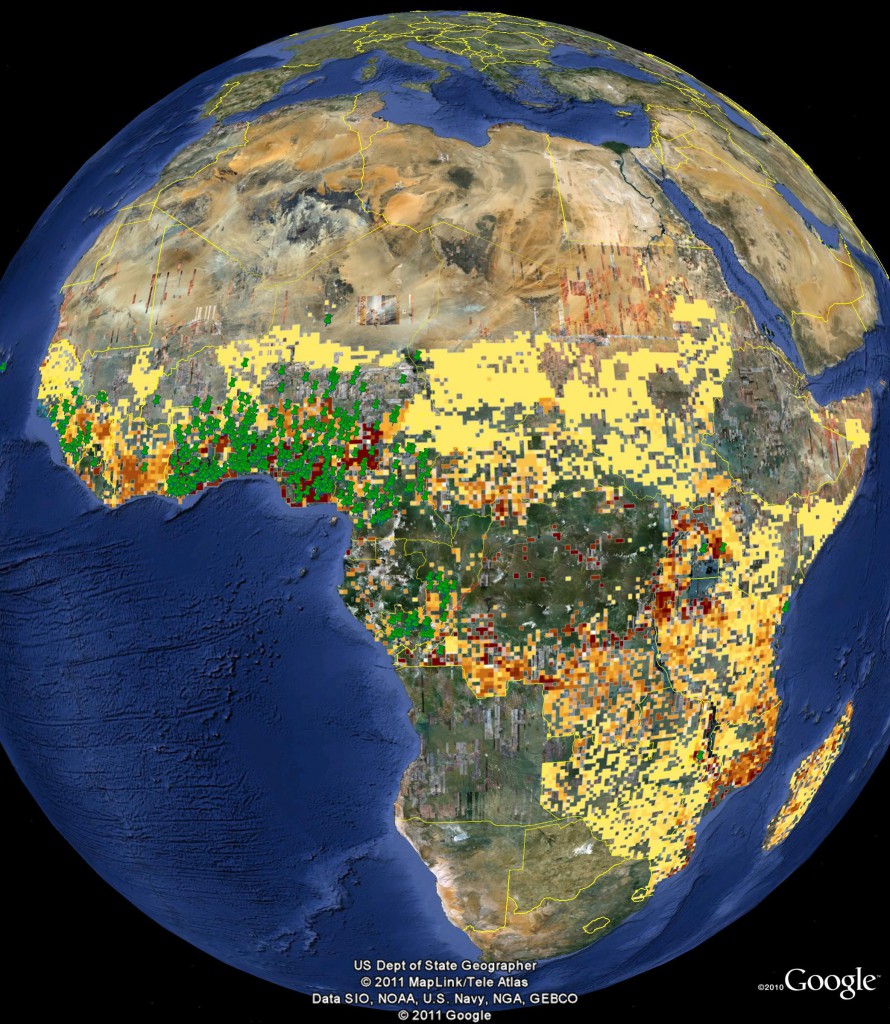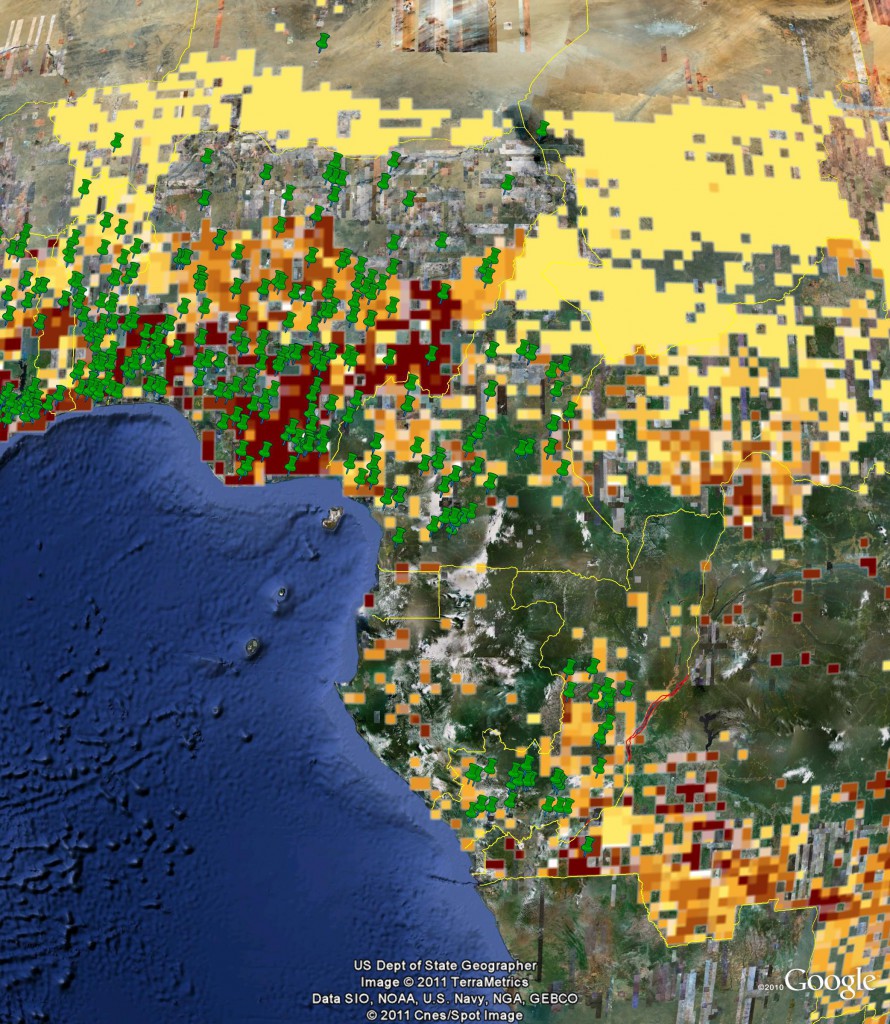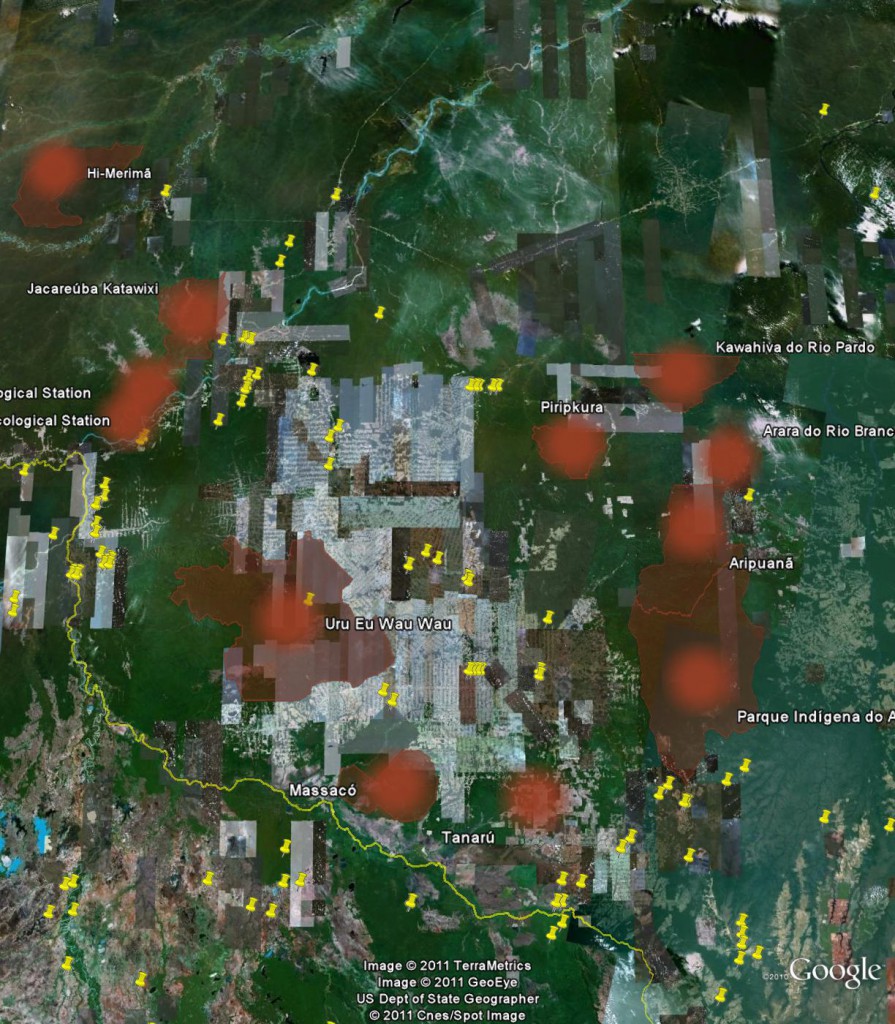A request from MapSpaM for people to help them in mapping the distribution of cassava cultivation in Africa 1 forced me into some more playing with Google Earth. I just took MapSpaM’s draft cassava map…
…and plonked on top of it the germplasm provenance data from Genesys. Here’s the result (right click to save the kmz file):
Which highlights — not for the first time, but very powerfully — the lack of material from eastern and southern Africa in the international genebanks. It is definitely important to think about safety duplicating national collections from those countries.
Here’s a close-up for West Africa:
Pretty good representation overall, but even here there are some definite gaps. Time to get collecting again in Africa too. Though of course a geographic gap is not necessarily a genetic gap…



